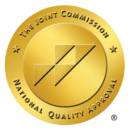The opioid crisis is one of the most urgent public health challenges we face today, affecting communities and putting a heavy strain on healthcare systems around the world. It’s driven by a sharp increase in misuse, addiction, and overdose deaths related to both prescription and illegal opioids. Tackling this problem requires a collective effort from policymakers, healthcare providers, community groups, and individuals.
Among healthcare professionals, pharmacists are in a unique position to make a difference. With their accessibility, regular patient interactions, and expertise in managing medications, they’re crucial in the fight against opioid use disorder (OUD). While opioid detox in New Jersey is an important first step, Pharmacotherapy for opioid use disorder has become a cornerstone of treatment, and pharmacists play a key role in its implementation. They help by screening for signs of misuse, closely monitoring opioid use, and educating patients about the risks of these powerful drugs, ultimately preventing further harm.
History of the Opioid Crisis
 The opioid crisis in the United States began in the late 1990s when pharmaceutical companies aggressively marketed opioid painkillers as safe and effective for pain management. The initial surge in prescriptions was based on the belief that these medications, when prescribed by healthcare professionals, carried little risk of addiction. As a result, opioids like OxyContin, Percocet, and Vicodin were widely prescribed for both acute and chronic pain. Over time, however, the over-prescription of these opioids led to widespread misuse, fueling an epidemic of addiction and overdose deaths.
The opioid crisis in the United States began in the late 1990s when pharmaceutical companies aggressively marketed opioid painkillers as safe and effective for pain management. The initial surge in prescriptions was based on the belief that these medications, when prescribed by healthcare professionals, carried little risk of addiction. As a result, opioids like OxyContin, Percocet, and Vicodin were widely prescribed for both acute and chronic pain. Over time, however, the over-prescription of these opioids led to widespread misuse, fueling an epidemic of addiction and overdose deaths.
As the crisis unfolded, both the medical community and the public became more aware of the dangers of opioid use. Rising addiction rates, overdose deaths, and a shift toward illicit heroin use—a cheaper alternative to prescription opioids—prompted the implementation of stricter opioid policy. These policies aimed to limit opioid prescribing while expanding addiction and heroin treatment options. Despite these efforts, the opioid crisis continues to affect individuals across all demographics, demanding ongoing efforts to address its root causes and long-term consequences.
What Are the Criteria for Diagnosing an Opioid Use Disorder?
The Diagnostic and Statistical Manual of Mental Disorders (DSM-5) provides criteria for diagnosing Opioid Use Disorder (OUD). These criteria include physical, psychological, and behavioral symptoms such as:
- Taking more than intended or longer: Individuals may start using opioids as prescribed, but gradually increase the dose or frequency.
- Desire or unsuccessful attempts to cut down: Despite recognizing the problem, individuals may struggle to reduce or stop opioid use.
- Significant time spent on opioid use or recovery: Opioid use dominates the individual’s life, neglecting other important activities.
- Craving or strong desire to use opioids: Intense cravings can lead to compulsive use.
Failure to fulfill major role obligations: Work, school, or home responsibilities are often neglected due to opioid use. - Continued use despite social or interpersonal problems: Opioid use persists despite negative impacts on relationships or social functioning.
- Giving up or reducing activities: Interest in social, occupational, or recreational activities declines.
- Use in hazardous situations: Opioid use occurs in dangerous settings, like driving or operating machinery.
Continued use despite health issues: Opioids are used even when they worsen physical or psychological problems. - Tolerance: Over time, individuals may need higher doses to achieve the same effect, increasing the risk of overdose.
- Withdrawal symptoms: Reducing or stopping opioid use can lead to physical withdrawal symptoms, such as sweating, nausea, or muscle pain.
A diagnosis of opioid use disorder is made when at least two of these criteria are met within 12 months.
 Addressing the Opioid Epidemic: Combating Overprescribing
Addressing the Opioid Epidemic: Combating Overprescribing
Pharmacists play a crucial role in preventing opioid use disorder by monitoring prescriptions, identifying potential misuse, and advocating for the responsible use of opioids. One of the key factors contributing to the opioid epidemic has been overprescribing. Overprescribing occurs when healthcare providers prescribe opioids at higher doses or for longer durations than necessary, increasing the likelihood of misuse, dependency, and addiction. Pharmacists can help reduce overprescribing by carefully reviewing prescriptions for potential red flags, such as high-dose prescriptions for prolonged periods, and working closely with prescribers to ensure that opioids are only prescribed when truly necessary.
Pharmacists can also ensure that patients are informed about non-opioid alternatives for pain management and provide guidance on using opioids only as prescribed. Engaging in open conversations with patients about the risks of opioids, along with other available treatment options, is critical for reducing the demand for opioids and preventing misuse.
How Community Pharmacists Can Prevent and Treat Opioid Use Disorder?
Community pharmacists are vital in preventing and treating opioid use disorder (OUD). As frontline healthcare providers with direct access to patients, they play a key role in harm reduction, early intervention, and recovery. By combining clinical expertise with a compassionate, patient-centered approach, pharmacists can significantly impact the opioid crisis. Here are key strategies they can employ:
Community pharmacists are uniquely positioned to screen for opioid use disorder (OUD) and provide early interventions. By using screening tools like the Opioid Risk Tool (ORT) or SOAPP, pharmacists can assess risk factors related to misuse and addiction, enabling timely action to prevent the development of OUD. Incorporating routine screenings into regular pharmacy visits further enhances the likelihood of identifying at-risk individuals early on.
One of the most effective ways pharmacists can reduce opioid misuse is through clear, compassionate education. By counseling patients on the proper use of opioids, the dangers of mixing medications, and the signs of dependence, pharmacists ensure patients understand the full scope of risks associated with opioid use. Providing supplementary materials and consultations further strengthens the educational impact. Pharmacists also serve as trusted sources for patients to address concerns and ask questions regarding their prescriptions.
Pharmacists play a key role in making naloxone widely available, often without a prescription. By educating patients, their families, and caregivers on how to recognize opioid overdoses and use naloxone, pharmacists ensure that more individuals are equipped to respond to emergencies. This proactive approach to harm reduction saves lives and fosters a community-wide sense of responsibility. Widespread availability of naloxone ensures that the community is better prepared to act swiftly in life-threatening overdose situations.
Pharmacists support patients in recovery by dispensing medications for opioid use disorder (MOUD), such as buprenorphine, methadone, or naltrexone. Their role extends beyond clinical dispensing. They provide emotional and educational support, helping patients navigate recovery in a stigma-free environment. This approach fosters greater adherence to treatment plans, contributing to the success of the recovery process. In addition, pharmacists play an integral role in monitoring for potential drug interactions and providing tailored advice to enhance treatment outcomes.
Pharmacists’ Role in Preventing Prescription Medication Misuse: Understanding Corresponding Responsibility
Pharmacists play a crucial role in preventing prescription medication misuse, guided by the principle of ‘corresponding responsibility,’ as outlined in Title 21 of the Code of Federal Regulations, Part 1306. This principle clarifies that ensuring the legitimacy of a controlled substance prescription is not solely the prescriber’s responsibility. Pharmacists must confirm that the prescription addresses a valid medical need and that the practitioner has acted within their professional scope. A prescription that fails to meet these criteria is legally invalid. If a pharmacist knowingly fills such a prescription, they risk violating the Federal Controlled Substances Act and may face penalties similar to those for dispensing without a valid prescription.
In the context of opioid policy, pharmacists have a vital role in ensuring the safe and appropriate use of controlled substances. To protect their license and professional reputation, pharmacists must carefully validate prescriptions for controlled substances and document their verification efforts.
What Can I Do if I Suspect Substance Use Disorder?
If you suspect someone has a substance use disorder (SUD), approach the situation with care and support. First, recognize the signs, such as mood swings, physical symptoms (weight loss, fatigue), or neglect of responsibilities. If you feel comfortable, talk to the person in a non-judgmental and empathetic way, expressing concern for their well-being.
Encourage them to seek professional help, such as a healthcare provider, counselor, or addiction specialist. Offer to help them find treatment resources like therapy, rehabilitation centers, or support groups (e.g., Narcotics Anonymous, Alcoholics Anonymous). Providing information on available resources, including hotlines like SAMHSA (1-800-662-HELP), can also be beneficial.
While offering support, set boundaries to avoid enabling harmful behaviors. Make sure to care for your own well-being, and seek support if needed from groups like Al-Anon or Nar-Anon.
Recovery is often a long and challenging process, so patience and understanding are key. Keep offering support, but respect their journey and the need for professional help. By doing so, you can help them take the first step toward recovery. At the same time, you maintain your emotional health.
Discovery Institute is Combating the Opioid Epidemic
The Discovery Institute leads efforts to combat the opioid epidemic with comprehensive treatment programs for addiction. We offer residential treatment, including medical detox, addiction counseling, and medication-assisted treatment. Our institute reduces stigma by providing a safe, non-judgmental environment for those seeking help. Through partnerships with healthcare providers, including pharmacists, we provide vital resources and education. Compassionate care is crucial in reducing opioid use disorder. Contact us today to learn more!

 Addressing the Opioid Epidemic: Combating Overprescribing
Addressing the Opioid Epidemic: Combating Overprescribing


